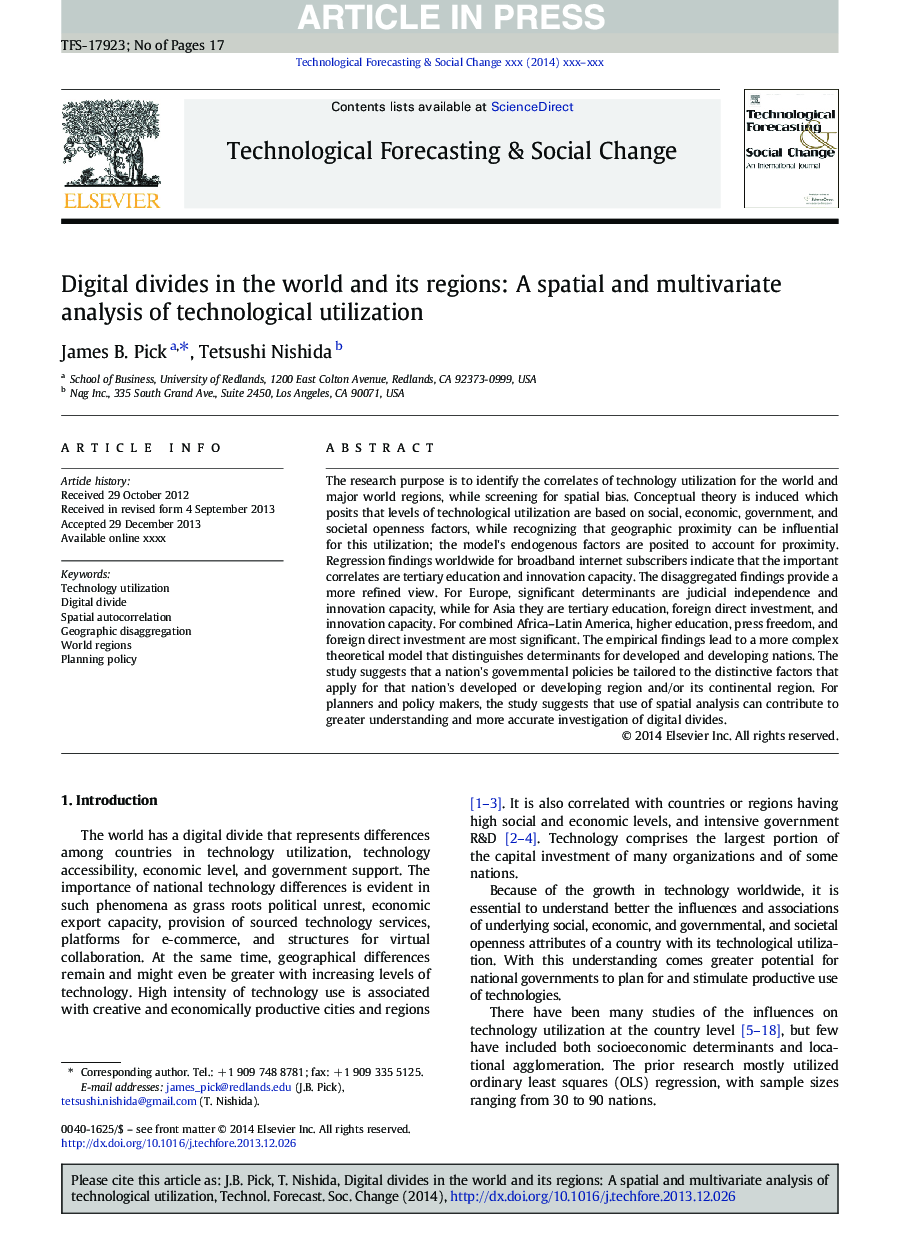| Article ID | Journal | Published Year | Pages | File Type |
|---|---|---|---|---|
| 7256851 | Technological Forecasting and Social Change | 2015 | 17 Pages |
Abstract
The research purpose is to identify the correlates of technology utilization for the world and major world regions, while screening for spatial bias. Conceptual theory is induced which posits that levels of technological utilization are based on social, economic, government, and societal openness factors, while recognizing that geographic proximity can be influential for this utilization; the model's endogenous factors are posited to account for proximity. Regression findings worldwide for broadband internet subscribers indicate that the important correlates are tertiary education and innovation capacity. The disaggregated findings provide a more refined view. For Europe, significant determinants are judicial independence and innovation capacity, while for Asia they are tertiary education, foreign direct investment, and innovation capacity. For combined Africa-Latin America, higher education, press freedom, and foreign direct investment are most significant. The empirical findings lead to a more complex theoretical model that distinguishes determinants for developed and developing nations. The study suggests that a nation's governmental policies be tailored to the distinctive factors that apply for that nation's developed or developing region and/or its continental region. For planners and policy makers, the study suggests that use of spatial analysis can contribute to greater understanding and more accurate investigation of digital divides.
Related Topics
Social Sciences and Humanities
Business, Management and Accounting
Business and International Management
Authors
James B. Pick, Tetsushi Nishida,
